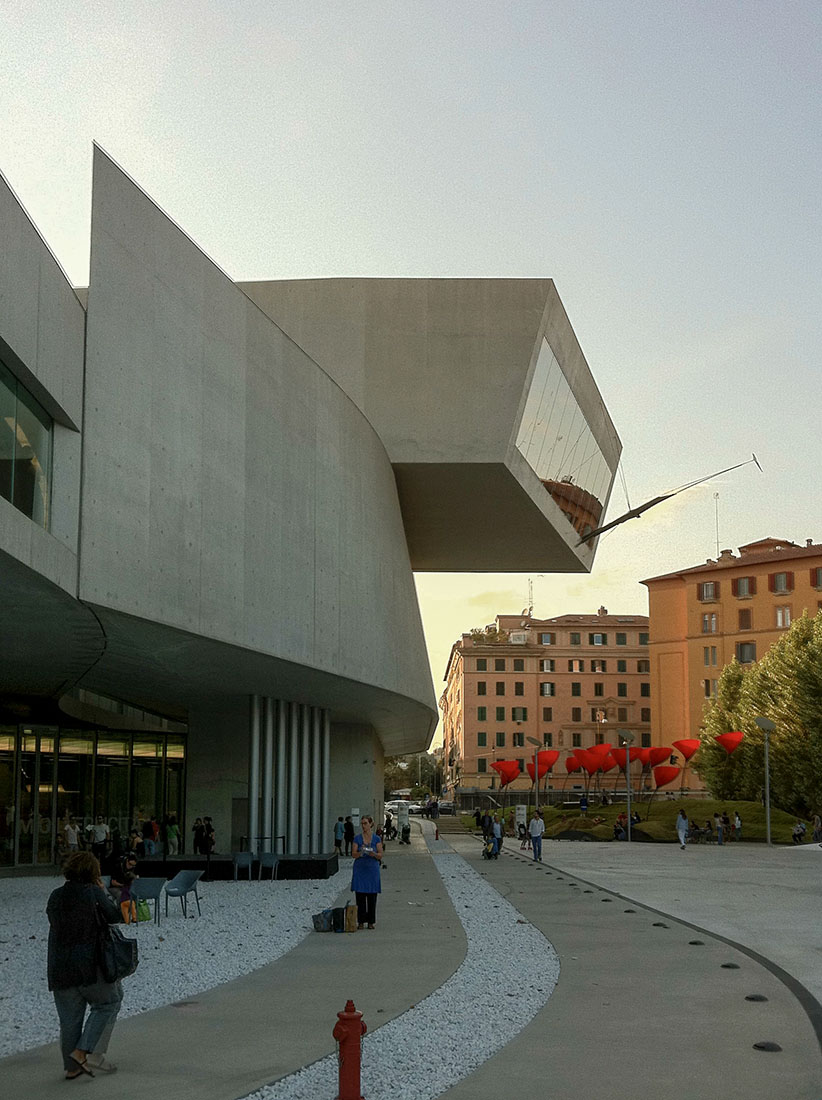 |
 |
 |
 |


MAXXI Museum of XXI Century Arts
Via Guido Reni 4a - Rome
1998 - 2009
After the former military site in the north of Rome was handed over to the Ministry of Culture in 1998, an international competition was announced for a place of cultural innovation. In this major procedure, Zaha Hadid prevailed over 273 other participants, including internationally renowned architects such as Steven Holl, Toyo Ito, Rem Koolhaas, Jean Nouvel, Kazuyo Sejima and Eduardo Souto de Moura. In spring 2010, the new MAXXI Museum of XXI Century Arts was opened for exhibition.
At first glance, the building, which is mostly made of exposed concrete, appears almost futuristic. Somewhat unexpectedly, the expressively curved forms can be derived contextually and functionally. From an urban planning point of view, the variously interconnected strands in the floor plan relate to the urban grid around the L-shaped plot. Inside, the multi-storey foyer, which extends over the entire height of the building and is criss-crossed by black stairs and walkways, is impressive. The dynamism of this space contrasts with the rather calm-looking exhibition rooms.
Nachdem das ehemalige Militärgelände im Norden Roms 1998 an das Kulturministerium übergeben worden war, wurde ein internationaler Wettbewerb für einen Ort kultureller Innovation ausgeschrieben. In diesem grossen Verfahren Konnte sich Zaha Hadid gegen 273 weitere Teilnehmer durchsetzen, unter anderem international renommierte Architekten wie Steven Holl, Toyo Ito, Rem Koolhaas, Jean Nouvel, Kazuyo Sejima und Eduardo Souto de Moura. Im Frühjahr 2010 wurde das neue MAXXI Museum of XXI Century Arts für den Ausstellungsbetrieb eröffnet.
Das mehrheitlich in Sichtbeton ausgeführte Bauwerk erscheint auf den ersten Blick geradezu futuristisch. Etwas unerwartet lassen sich die expressiv geschwungenen Formen kontextuell und funktional herleiten. Die vielfältig vernetzten Stränge im Grundriss beziehen sich in städtebaulicher Hinsicht auf das urbane Raster rund um das L-förmige Grundstück. Im Innern beeindruckt das mehrstöckige Foyer, welches sich über die gesamte Gebäudehöhe erstreckt und von schwarzen Treppen und Stegen durch zogen wird. Die Dynamik dieses Raumes steht im Kontrast zu den eher ruhig wirkenden Ausstellungsräumen.